
Tel :18138443506
Phone :13798439478
Email :mammon.xu@zhixin-cert.com
Addr :Floor 3, No. 5, Shanglian New Village, Shangcun Community, Gongming Street, Guangming District, Shenzhen (Chuangxin Office Building)
KC certification
Introduction to Certification
The KC (Korea Certification) certification, formerly known as EK certification, is a safety certification system for electronic and electrical appliances in Korea, namely the KC mark certification. It is a mandatory safety certification system implemented by KATS in accordance with the Electronic Appliances Safety Control ACT on January 1, 2009.
In order to avoid repeated certification, EMC and Safety will be managed separately from July 1, 2012. For electronic and electrical products applying for Korean certification, KC certificates and KCC certificates (new MSIP) must be obtained for their safety and EMC requirements. There are two qualification certification institutions certified by KC: KTC, Korea Testing Certification, and KTL, Korea Electrical Testing Institute. These two are not only KC's license issuing institutions, but also qualification testing laboratories.
In terms of safety standards, all products entering the Korean market need to comply with the Korean safety standard K (similar to IEC standards). The use of IEC standards must meet the requirements of South Korea. National differences can be found in the announcement in IECEE's CB system. In terms of EMC, Korean EMI standards are similar to CISPR standards and EMS standards are similar to EN standards.
According to the requirements of the latest Electrical Appliance Safety Management Law, KC certification is divided into mandatory safety certification, self-discipline safety certification and supplier self confirmation according to the different hazard levels of products. Among them, the products controlled by mandatory safety certification are more dangerous, while the products controlled by supplier self confirmation are less dangerous.
Product scope
The product range of KC certification generally includes electrical products with AC50V above to 1000V below:
1. Cords, Cables and Cord set
2. Switches for Electrical Appliances
3. Capacitors or filters as components for power supply unit
4. Installation Accessories and Connection Devices
5. Installation Protective Equipment
6. Safety Transformer and Similar Equipment
7. Household and Similar Equipment Appliances
8. Motor Tools
9. Audio, Video and Analog Electronic Appliances
10. IT and Office Appliances
11. Lighting
12. Appliance with Power Supply or Charger
Application process
1. The customer prepares samples and submits them to Sincere Testing
2. Sincere Testing submits samples and data to KTL/KTC for testing
3. KTL/KTC shall conduct safety test, and issue KC test report after the test
4. (If any) For safety certification, KTL/KTC needs to arrange factory inspection and conduct annual factory inspection every year thereafter
5. KTL/KTC audit report and other application documents, issue KC certificate if there is no problem
Certification mark
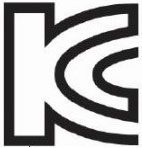
KC nameplate must include the following contents:
① KC mark (including certificate No. SUxxxxxxxx)
② Product name (must be expressed in Korean)
③ Model Name
④ Voltage frequency
⑤ Factory name
⑥ Country of manufacture
⑦ Double insulation sign "return" (if necessary)
⑧ Production date
⑨ A/S after-sales service telephone (must be in Korea)
Other information
Technical information: voltage frequency 110V/220V/380V, 60Hz or 50Hz/60Hz, plug KSC8305
Mandatory: mandatory
Certificate validity:
1. Compulsory safety certification ------ None, and the annual audit maintains the validity (template below)
2. Self regulatory safety confirmation - 5 years
3. Self confirmation by the supplier ---- without certificate, the confirmation is permanently valid
Factory inspection requirements: the mandatory safety certification requires the first factory inspection and annual audit
Requirements for the certificate holder: the mandatory safety certification must be the certificate of the factory, and the other two types of certification can be the certificate of the factory/manufacturer/importer.
MSIP certification
Introduction to Certification
Different from many countries, according to different requirements of EMC, wireless RF and communication TELEC, there are different certification controls. In order to facilitate management, South Korea has integrated EMC/RF/TELECOM certification into MSIP certification. The authentication name of Korean wireless communication authentication has gone through the development process from MIC to KCC, and then to MSIP.
First, introduce the predecessor KCC of MSIP. KCC certification is a compulsory certification for wireless telecommunications equipment and products implemented in accordance with the Basic Telecommunications Law and the Radio Wave Law of South Korea. Later, because KC separated Safety from EMC, EMC was also included in the certification scope of KCC. KCC, the Korean Communication Commission, is responsible for the management of telecommunications products, and authorizes RRA, Radio Research Agency, as its certification authority, to carry out specific certification work for products. KCC certification is conducted by the Korean laboratory recognized by its predecessor MIC certification, and RRA issues the type approval certificate.
Since July 1, 2013, the responsible unit for EMC/RF/TELECOM certification in South Korea has been transformed from the Korea Communications Commission to the Ministry of Science, ICT&Future Planning of South Korea. According to this, the opening meeting of ID code in KC LOGO has been changed from KCC to MSIP, and the rest has not changed.
According to the product category, MSIP is mainly divided into the following three types of certification:
1. Conformity Certification: Wireless communication equipment, such as telephone, regulator, fax machine, etc.
2. Conformity registration: electrical appliances.
3. Interim Certification: for equipment without standards
Product scope
Basically including all wireless communication products, as well as most electronic and electrical products covered by KC certification. Here are just a few of them:
1. Automatic alarm receiver installed on the ship
2. Automatic alarm telephone device
3. Wireless beacon for emergency position indication
4. Wireless marine radar and automatic radar tracking equipment for ships
5. Wireless equipment for offshore mobile phones
6. Wireless equipment for satellite mobile communication radio office
········
Application process
1. The customer prepares samples and materials and applies to submit them to ITA
2. ITA submits samples and data to KTL/KTC for testing
3. KTL/KTC shall carry out the test, issue the test report after the test, and submit the report to the Korean licensing agency RRA
4. The South Korean organization RRA audit report and other application documents will issue the MSIP certificate if there is no problem
Marking requirements

The MSIP nameplate must include the following:
LKC mark (including certificate number MSIPxxxxxxxx)
L Product name (must be expressed in Korean)
L Model name
L Factory name
L Country of manufacture
Production date
Other information
Technical information: voltage frequency 110V/220V/380V, 60Hz or 50Hz/60Hz, plug KSC8305
Mandatory: mandatory
Certificate validity: no validity
Factory inspection requirements: None
Requirements of the holder: None
MEPS/E-standby/HECP
Introduction to Certification
In order to popularize and expand energy saving products, reduce global energy, reduce greenhouse gas emissions (environmental protection), and enable consumers to buy energy-efficient products first, South Korea has introduced the energy efficiency certification system since the 1990s. The energy efficiency control organization is KEMCO (Korea Energy Management Corporation), and the testing organizations mainly include KTL and KTC. According to the products and standards, there are three main categories:
1. Energy efficiency rating system MEPS
The energy efficiency grade marking system is an obligation system that divides products into 1-5 grades according to energy efficiency and energy use. The lower limit of energy efficiency is the minimum energy performance standard (MEPS).
Since 1992, the Korean government has introduced a mandatory system of energy efficiency registration and marking, which uses the minimum efficiency standards (MEPS) 1-5 level labels to mark products. In order to expand the popularization of energy-saving products, the energy consumption rate rating system has the following three obligations for domestic manufacturers (domestic) and domestic importers (imported): ① It is obligated to stick the energy consumption rate rating label; ② Have the obligation to declare products; ③ The minimum consumption rate standard shall be met.
2. Standby low power consumption system E-standby
At the same time, the Korean government has introduced the E-Standby certification system, which has been gradually enforced since 1999.
Standby energy saving warning sign (yellow) is implemented for products that fail to meet standby energy saving standards. Products that fail to meet the standard requirements need to be affixed with this sign. On the contrary, energy-saving signs (smile signs) will be affixed if they are satisfied.
3. High efficiency energy equipment system HECP
The Korean government introduced a voluntary High efficiency Appliance Certification program in 1996, which is a certification system that evaluates the inspection results of energy efficiency and quality tests and requires that certain standards be met.
Product scope
1. Energy efficiency rating system MEPS covers 35 products:
Refrigerator
dehumidifier
Multifunctional electric water pump system
Commercial refrigerator
Fluorescent lamp
Electric refrigeration equipment
Cold and warm water machine
Ballasts for fluorescent lamps
Water heater (gas)
dehumidifier
Pickle refrigerator
rice cooker
Ballast internal fluorescent lamp
transformer
Electric blanket
Air conditioner
Vacuum cleaner
Three phase induction motor
Window set
Bed heater
Washing machine
electric fan
Domestic boiler (gas)
Television
Heat transfer plate
Drum washing machine
air cleaner
Adapter/Charger
Air heater
Electric bed
Dishwasher
Incandescent lamp
Air conditioner
Electric heater
Electric radiator
2. Standby low power consumption system E-standby covers 22 types of products:
computer
Copier
Television
Microwave Oven
Automatic washing and drying toilet
monitor
a scanner
hi-fi equipment
Set top box
Modem
printer
Composite machine
DVD player
Visual doorbell
With radio telephone
Fax
Hand dryer
recorder
home gateway
Automatic power saving control equipment
video recorder
The server
3. High efficiency energy equipment system HECP covers 41 products:
High illuminance reflector for fluorescent lamps
LED pilot lamp
Ballast for sodium lamp
Illumination automatic control lighting equipment
External LED lamp of converter
Converter
Waste heat recovery type air exchanger
Converter internal LED lamp
LED traffic light
Gas water heaters for industrial buildings
vending machine
Direct fired absorption water cooler
Centrifugal spiral freezer
Ballasts for metal halide lamps
Single-phase induction motor
Water fan
Oil fired warm water heater
Oil fired water heaters for industrial buildings
Incomplete enumeration
Application process
1. Documents and samples submitted to KTC/KTL
2. KTC/KTL shall conduct the test and issue the test report
3. KTC/KTL contact the local agent/importer and register with KEMCO
4. Successful registration, KEMCO issues MEPS certificate and label design drawing
5. Energy efficiency label affixed by the importer
Note: The registration must be completed within 60 days after the report issue, otherwise the test report will expire!
Label requirements
1. Energy efficiency rating system MEPS label:
MEPS labels of different products are different. The following is an example of energy efficiency labels of common products:
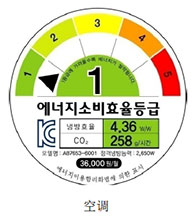
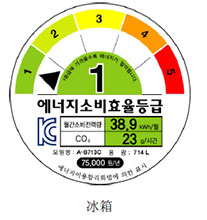
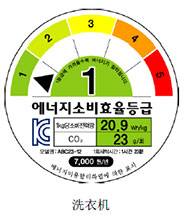
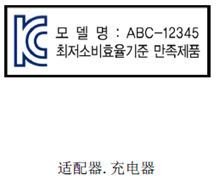
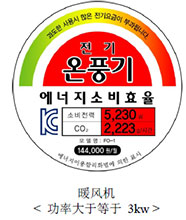
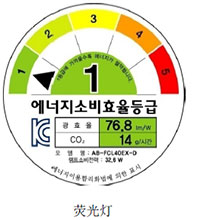
2. Standby low power consumption system E-standby tag:
E-standby warning sign (left figure) is a mandatory sign for products that fail to meet the standby energy saving standard, in order to raise consumers' vigilance. On the contrary, the energy-saving sign (right figure) is a sign that can be added voluntarily for products that meet the standby energy consumption standard.

3. High efficiency energy equipment system HECP label:
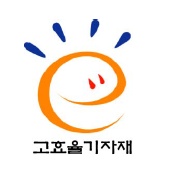
Other information
Technical information: voltage frequency 110V/220V/380V, 60Hz or 50Hz/60Hz, plug KSC8305
Mandatory: mandatory
Certificate validity:
1. Energy efficiency rating system MEPS: no expiry date
2. Standby low power consumption system E-standby: no expiry date:
3. High efficiency energy equipment system HECP: 3 years
Factory inspection requirements: None
Requirements of the holder: it must be declared by the local Korean importer
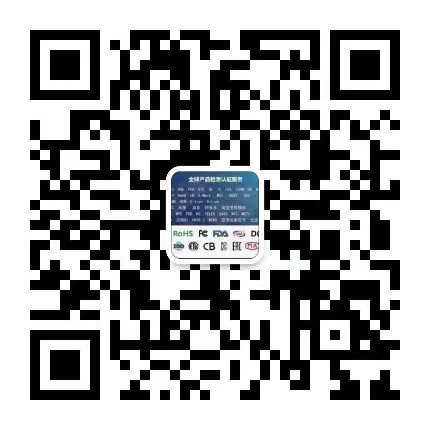

Service Hotline
18138443506
13798439478